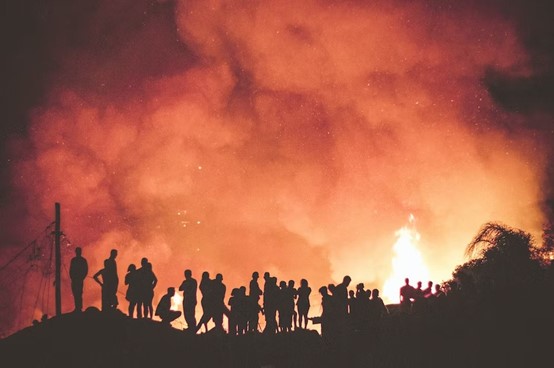In a devastating turn of events, the death toll resulting from the Maui wildfires has risen to a shocking 99 with nearly 1000 still missing.

This tragic incident is now the deadliest wildfire in the United States in over a century. As search teams persistently comb through the remnants of Lahaina, a famous resort town, the blaze’s aftermath unfolds, leaving a trail of destruction in its wake. In a recent announcement, the Federal Emergency Management Agency (FEMA) revealed that the projected cost of rebuilding Lahaina is estimated to reach a staggering $5.5 billion.
This comes after the devastating damage inflicted upon the area, with over 2,200 structures left in ruins and a vast expanse of 2,100 acres (850 hectares) scorched by the flames. The extent of the destruction has prompted FEMA to undertake a comprehensive assessment of the financial resources required to restore Lahaina to its former glory.

In a recent statement, Hawaii Governor Josh Green expressed his grave concern over the devastating fires that have ravaged the state, labeling them as the “largest natural disaster in Hawaii state history.” According to Governor Green, the fires have caused extensive destruction, with approximately 80% of the gorgeous beach-front town being completely decimated.
In the effects of the disaster, the search for hundreds of missing individuals continues, with little progress made thus far. Despite the passage of nearly a week, search teams have only managed to cover a tiny part of the vast affected area. Fires on the island are currently under control, although certain areas still require ongoing efforts for complete extinguishment.
Hundreds of individuals forced to evacuate their residences in Lahaina have sought shelter in a designated emergency shelter. The shelter, established to provide a haven for those displaced by the ongoing crisis, has become a temporary home for these displaced residents.
Approximately 2,700 homes have been tragically destroyed, according to recent reports. The destruction’s extent is shocking and heart-wrenching, leaving countless individuals and families displaced and grappling with the aftermath. The number of missing individuals in Maui has notably declined, dropping from an initial count of over 2,000 to approximately 1,300.
Maui Humane Society Reports approximately 3,000 animals displaced by devastating wildfires.
In response to growing worries over the failure of sirens and other warning systems to effectively reach residents during the recent fires, Green has announced plans for a thorough review. This comprehensive assessment aims to identify the shortcomings and address the frustrations experienced by the affected communities. In light of the rapid pace at which the fire spread, estimated to be up to one mile per minute, Green emphasized the limited possibilities for intervention, stating that “it’s unlikely that much could have been done except, of course, evacuating people beforehand, which is a topic we will address.”

The cause of the fires in West Maui remains uncertain. However, experts have pointed to various factors contributing to the extensive devastation. The severity of the destruction can be partially attributed to the meeting of powerful winds originating from Hurricane Dora in the Pacific, in addition to a prolonged period of drought in the area. Wildfires, a long-standing regional hazard, continue to pose a significant risk.
Since last week’s wildfires in Hawaii, American Airlines has scheduled 21 flights from Maui’s Kahului Airport to the mainland United States, relocating more than 4,200 passengers.
On Friday, the Hawaii State Health Department warned that dangerous substances, including asbestos and lead, might be present in the ash and dust from burnt structures. Although lead and asbestos were banned in the 1970s, many structures demolished in the hardest-hit area, Lahaina, may have contained these toxins.
Lead and asbestos are near the top of the list of potential hazards. According to Hawaii’s state toxicologist Diana Felton, “those are things that are in paint, in buildings, and then do not really get destroyed with burning, so they are now in the ash and the dust.”
While Felton acknowledged that lead and asbestos air particles pose a risk to Lahaina residents, he emphasized that residents’ hands and clothing increase the risk of accidental ingestion making it even more difficult for those wishing to return to the remains of their homes.
